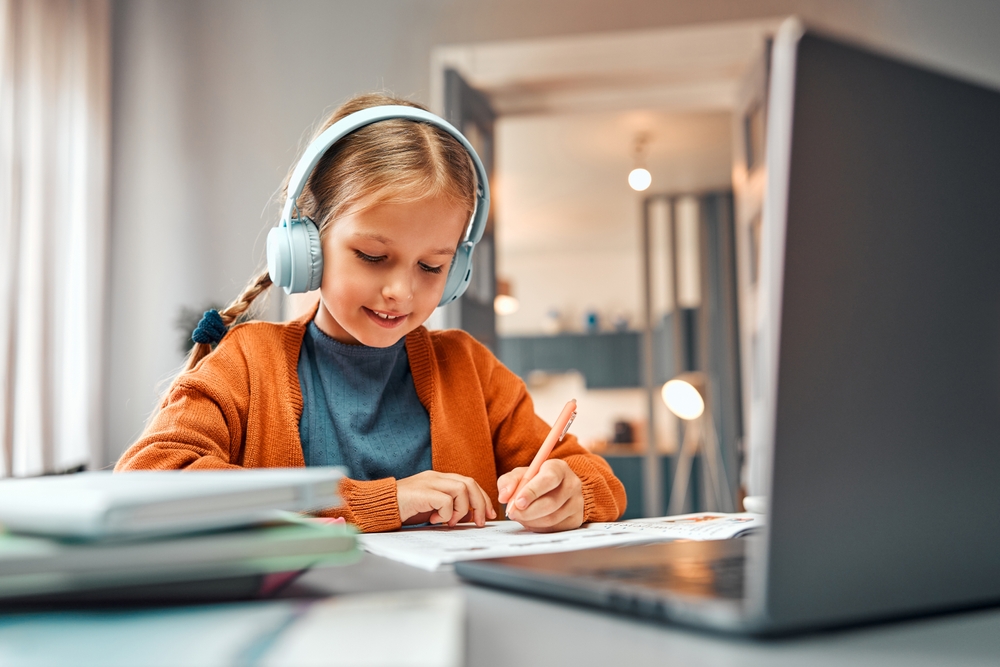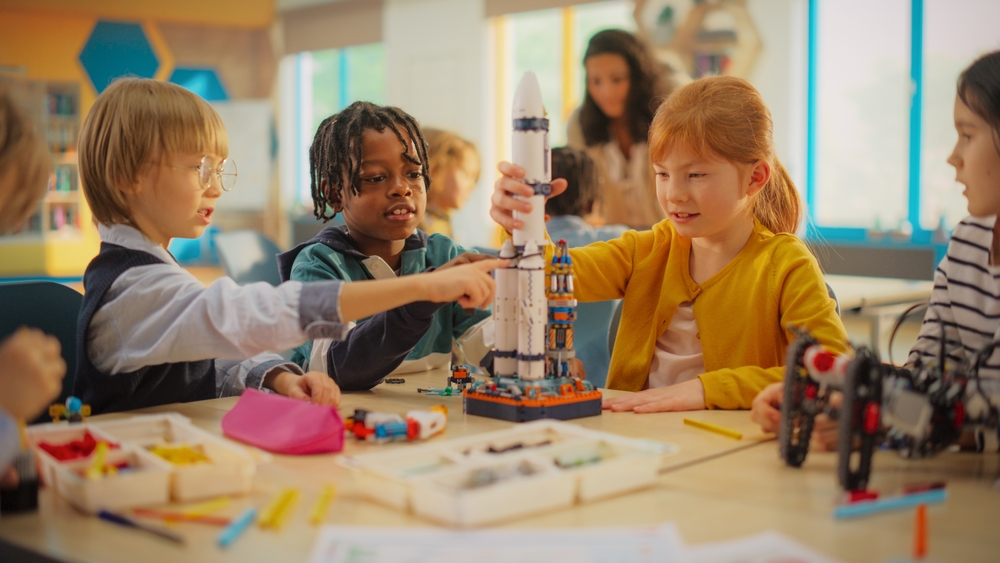
Understanding and catering to diverse learning styles has long been a key discussion in educational circles. Acknowledging that students learn in different ways fosters an inclusive and personalized learning environment. This article delves into the types of learning styles, their characteristics, and how they can be incorporated into education to optimize student success.
Learning styles describe the preferred methods individuals use to process, comprehend, and retain information. Recognizing these preferences allows educators to craft more engaging and effective learning experiences. The four primary learning styles typically discussed include:
- Visual Learners: These learners process information best when it is presented visually. Diagrams, illustrations, and spatial arrangements resonate strongly with them.
- Auditory Learners: Auditory learners absorb information through listening. Lectures, discussions, and podcasts are effective ways to reach them.
- Kinesthetic Learners: These individuals learn best by doing. They thrive in hands-on environments and engage deeply through physical activities.
- Reading/Writing Learners: These learners prefer interacting with text, gaining understanding through reading and writing.
Why Understanding Learning Preferences is Crucial
When teaching aligns with a student’s learning style, it results in a personalized learning experience. Tailoring lessons to fit students’ strengths makes the learning process smoother and more enjoyable. This approach promotes better comprehension and retention, as learners engage more actively with material presented in ways they naturally connect with.
Students are more likely to engage and invest in learning when information is presented in a manner that resonates with them. Aligning teaching styles with learning preferences enhances participation, leading to higher motivation levels and improved outcomes.
Although the correlation between tailored teaching and enhanced outcomes can vary, anecdotal evidence from educators suggests students who learn through their preferred style often demonstrate greater retention and comprehension.
Recognizing diverse learning styles is essential to promoting an inclusive education system. It acknowledges the individual differences of each learner, ensuring that no one is left behind in a one-size-fits-all approach. A more flexible and adaptable system caters to everyone’s strengths.
By understanding their learning preferences, students gain more control over their educational experience. This self-awareness encourages students to seek out study methods and resources that align with their strengths, nurturing a lifelong passion for learning.
The Challenges and Criticisms of Learning Styles
Despite the popularity of learning styles, some educators and researchers argue that catering to individual learning preferences does not necessarily translate to better learning outcomes. Research shows mixed results on whether aligning teaching styles with learning preferences improves performance. As a result, educators are advised to use learning styles as part of a broader instructional strategy rather than a sole guiding principle.
Furthermore, accurately assessing learning styles can be challenging. Self-report questionnaires, often used to identify learning styles, may not reflect a student’s true learning preferences. They can also be subjective and unreliable. Therefore, while understanding learning preferences can be beneficial, it is not a definitive solution for all educational challenges.
Visual Learners: Learning by Seeing
Visual learners are drawn to images and spatial arrangements. These learners rely heavily on visual cues to understand and remember information. They often excel at reading charts, watching videos, and studying diagrams. Their ability to process and retain information visually often makes them strong observers with a keen attention to detail.
Best Practices for Supporting Visual Learners
- Utilize visual aids: Incorporate charts, infographics, and videos into lessons to help visual learners understand concepts more clearly.
- Encourage color-coding: Use color to differentiate between topics or concepts, making it easier for visual learners to categorize and recall information.
- Graphic organizers: Tools like Venn diagrams and concept maps help visual learners structure their thoughts and see relationships between ideas.
- Interactive whiteboards: Encourage learners to manipulate images and diagrams directly on interactive boards, fostering deeper engagement.
A visually stimulating environment can help these learners thrive, but balance is essential to avoid overstimulation. Incorporate plenty of visual resources—like educational software and picture books—while making sure the classroom remains organized and not cluttered.

Auditory Learners: Learning by Listening
Auditory learners absorb information through sound. They excel in environments where they can engage in discussions, listen to explanations, and process information verbally. Auditory learners tend to have strong verbal communication skills, which often makes them active participants in group settings.
Best Practices for Supporting Auditory Learners
- Leverage audio resources: Use audiobooks, recorded lectures, and podcasts to reinforce auditory learning.
- Facilitate discussions: Group work and oral presentations help auditory learners process and retain information.
- Encourage vocalization: Auditory learners benefit from reading aloud or repeating key concepts back to themselves, reinforcing understanding through sound.
- Use mnemonic devices: Rhythm and rhyme can be powerful memory aids for auditory learners.
Auditory learners thrive in classrooms that encourage verbal communication. This could include group discussions, oral presentations, and even incorporating music into lessons. Offer quiet spaces for listening tasks where auditory learners can focus without visual distractions.
Kinesthetic Learners: Learning by Doing
Kinesthetic learners, often referred to as tactile learners, need hands-on experiences to fully engage with and understand material. They learn best by moving, manipulating objects, and physically interacting with the learning environment. These learners often excel in activities like sports, building, and performing experiments.
Best Practices for Supporting Kinesthetic Learners
- Incorporate movement: Use physical activities like role-playing, building models, or conducting experiments to make learning tangible.
- Provide tactile resources: Give learners opportunities to touch, build, and manipulate objects relevant to their lessons.
- Offer flexible seating: Kinesthetic learners often struggle to sit still for long periods. Allow movement with standing desks, flexible seating, or incorporating breaks that involve physical activity.
- Use simulations and models: Interactive simulations or science experiments give kinesthetic learners the chance to engage physically with learning materials.
Kinesthetic learners thrive in active environments that promote movement. Flexible seating options like standing desks, along with rotation stations that incorporate different physical tasks, can provide kinesthetic learners with the freedom to move while learning.
Integrating Multiple Intelligences (MI) with Learning Styles
In 1983, Howard Gardner’s Multiple Intelligences (MI) Theory reshaped the understanding of intelligence, proposing that human intelligence is not singular but composed of multiple types. The eight types include linguistic, logical-mathematical, musical, bodily-kinesthetic, spatial, interpersonal, intrapersonal, and naturalist intelligence. While learning styles refer to how individuals prefer to learn, Gardner’s theory provides a framework for understanding a person’s capabilities.
Gardner’s theory distinguishes between intelligence and learning preferences. A student may excel in a particular intelligence, such as musical intelligence, but prefer to learn visually. Recognizing these differences can help educators create a more inclusive classroom that respects diverse capabilities and preferences.
For instance, students strong in logical-mathematical intelligence might excel in problem-solving and scientific thinking but prefer kinesthetic learning. Teachers can leverage this by incorporating physical activities into math lessons to engage their strengths in both logic and movement.
By integrating MI theory into education, teachers can create a more personalized and varied approach, ensuring that lessons reach learners across different intelligences. This encourages variety in instructional methods, allowing students to approach problems and concepts from multiple angles.

Assessing Your Child’s Learning Style
Parents play an essential role in helping children discover their learning styles. By observing study habits, physical engagement, and responses to multimedia, parents can gain valuable insights into their child’s preferred methods of learning.
Strategies for Parents:
- Monitor study habits: Watch how your child prefers to complete tasks. Do they draw diagrams or prefer reading aloud?
- Provide various learning tools: Introduce flashcards, educational songs, or tactile puzzles and note which ones resonate most with your child.
- Engage in conversation: Talk to your child about their school projects, noting whether they lean toward visual, auditory, or kinesthetic descriptions.
- Encourage self-awareness: Ask your child what learning strategies they find most helpful, fostering independent learning skills.
Online quizzes can help children identify their learning preferences, though these tools should be used as a guide, not a definitive answer. Encourage your child to experiment with different learning techniques to see what works best for them.
Embracing Holistic Education
Recognizing diverse learning styles helps create a more personalized and engaging educational experience. Here are the key takeaways:
- Variety of Learning Styles: Each student has unique learning preferences, such as visual, auditory, kinesthetic, or reading/writing styles.
- Personalized Learning: Tailoring teaching to fit these styles leads to greater engagement and comprehension.
- Enhanced Motivation: When learning aligns with student preferences, they tend to be more motivated and engaged.
- Inclusivity in Education: Recognizing learning styles promotes an inclusive learning environment that addresses diverse needs.
- Promoting Autonomy: Helping students understand their learning preferences fosters greater independence in their educational journey.
Integrating learning styles into the curriculum is a powerful strategy to enhance student outcomes, but it should be balanced with a broader instructional approach. Learning styles should be seen as a tool to deepen understanding, not a rigid framework.
Readability Tutor is a cutting-edge, AI-powered platform designed to transform your child’s reading journey by offering personalized support. Whether your child is a visual learner, auditory learner, or kinesthetic learner, Readability Tutor adapts to their unique learning style to help them develop essential literacy skills in a fun and engaging way.
With real-time feedback, Readability Tutor supports better comprehension, vocabulary growth, and reading fluency. The platform listens to your child read aloud, identifying areas for improvement and offering corrections or encouragement as needed. Try Readability Tutor now and experience the future of personalized reading education!

 Español
Español